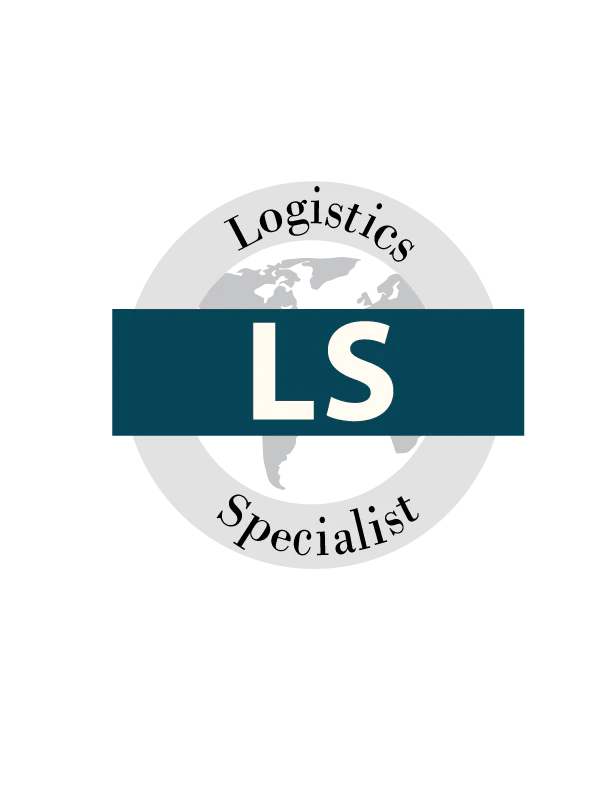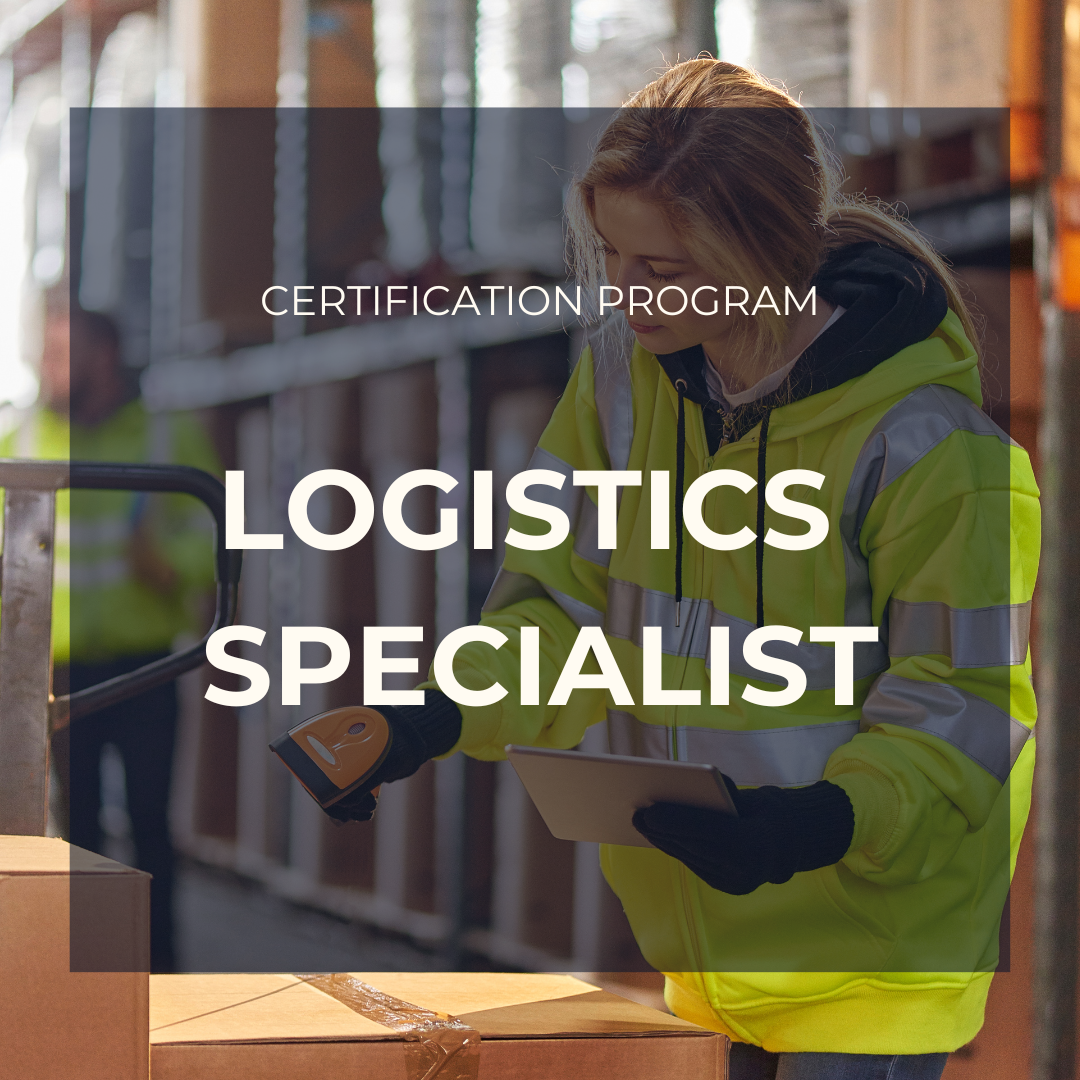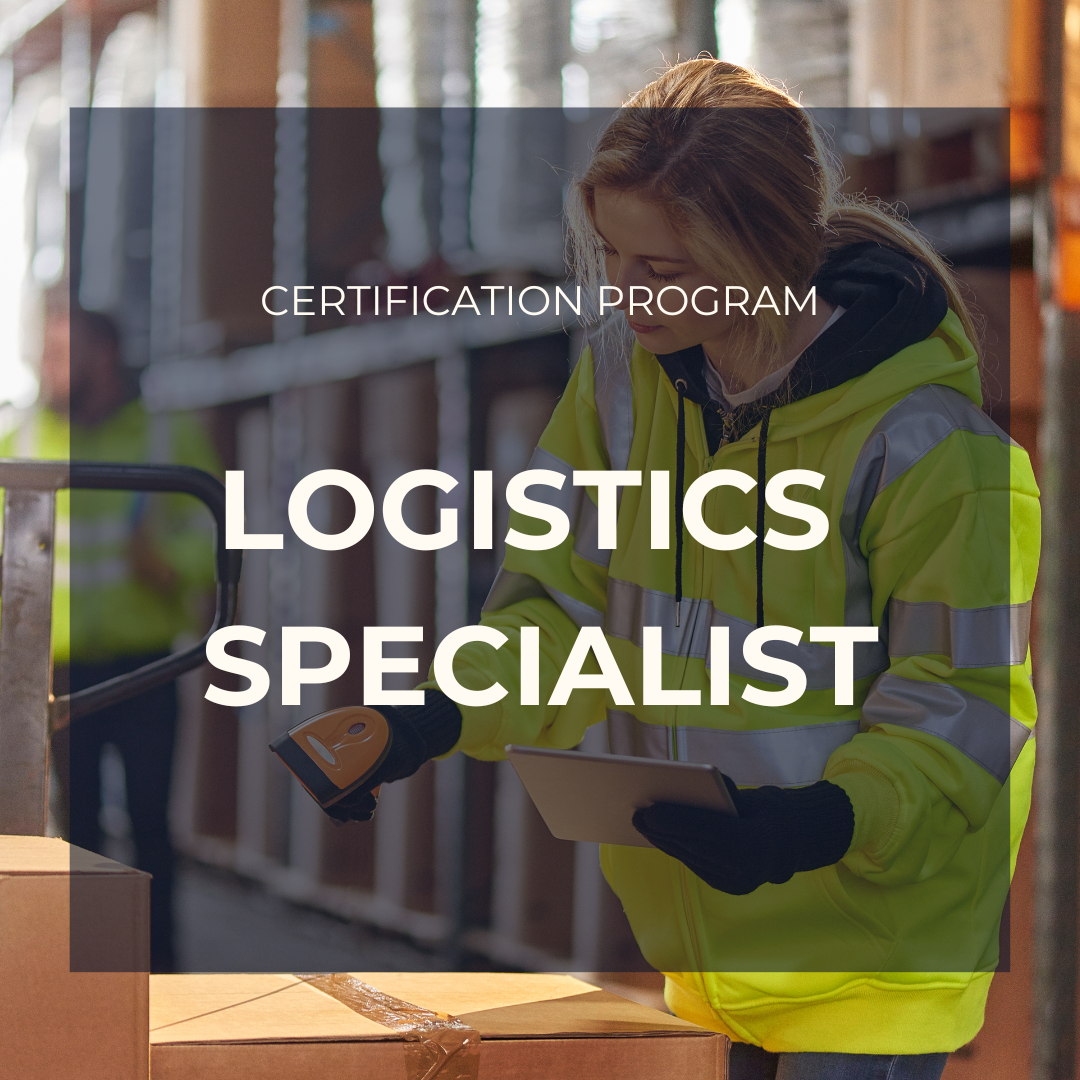Logistics Specialist Program
New Cohort: April 29
Program Overview
This program is structured in three stages: starting with identifying problems and developing solutions, transitioning to integrated networks, and finishing with a capstone focused on managing logistics processes.
STAGE 1: LOGISTICS SPECIALTIES is built on an 8-step Simplex problem solving method. Skills-development involves divergent and convergent thinking applied to ill-defined or fuzzy situations. Using the structured 8-step approach, you are led through identifying a clear problem, ideating solutions, selecting the best idea and creating an action plan to gain acceptance.
There are 5 specialties, and you can choose any one, focusing on the specific challenges you face at the workplace.
STAGE 2: INTEGRATED LOGISTICS NETWORKS concentrates on the structural, functional and
operational aspects of making logistics decisions with the goal of reducing costs and increasing profit margins. Key factors include how to design the optimal network; carry out quality demand management; continuously improve internal/external supply chain processes which lead to the right logistics decisions. It enhances skills necessary to promote customer value creation by optimizing each link in the supply chain. The focus is operational management and micro-forecasting skills.
STAGE 3: LOGISTICS PROCESS DIAGNOSTICS focuses on process and systems thinking. Using the experiential learning provided by a simulation, you are led through the reality of the impact small changes in customer demand have on ordering patterns and inventory levels. The learning focus is on inventory optimization [IO] with a goal of minimizing inventory carrying costs [stock piling] while avoiding stock outs. Simulating real time issues, skills development includes decision-making while dealing with limited information and a lack of demand visibility. You will explore demand forecasting, accounting for lead times, and batch ordering as techniques for reducing uncertainty and demand
variability.

Logistics Specialist Designation
By completing this program, you will earn the Logistics Specialist designation (LS) as a public statement of competence in the fundamentals of logistics and supply chain management.
Earning the LS designation also gives you advanced standing to earn the P.Log. designation.
Course Content
MODULE 1: Logistics Specialties
This unique module provides you with an 8-step problem-solving toolkit, a key skill to help you in every stage of your SCL career.
A final assignment will guide you through applying the tool towards a real problem or situation you are facing/have faced at work.
To create a portfolio relevant to your role in your organization (or a role you aspire to), participants can choose any one out of the five topics listed below.
TOPIC 1: INVENTORY
- Good Logistics Practices: Define personal and company objectives; Modify company procedures to meet standards; Address and remedy performance gaps among employees
- Scheduling Resources: Successfully forecast weekly resources; Increase demand for resources; Resolve discrepancies
- Assembling Orders: Effective order picking procedures; Methods for correctly picking products; Methods for reducing product shortages; Efficient guidelines for assembling orders; Methods for proper vehicle loading
- Controlling Inventory: Efficiently reconcile inventory; Plan inventory around projected demand; Create effective space utilization
- Product Damage: Understand the costs of damage to you and your customer; Learn how to minimize damage; Understand packaging limitations and restrictions
TOPIC 2: OPERATIONS
- Good Logistics Practices: Define personal and company objectives; Modify company procedures to meet standards; Address and remedy performance gaps among employees
- Operating Procedures: Physical distribution procedures; Importance of procedure education and compliance; How to effectively revise procedures
- Controlling Budgets: Be able to present realistic information in budgets; Understand the difference and importance of fixed and variable costs; Be able to negotiate timely action to deal with real variances; Be able to generate a projection of these variances in real time
- Operations Floor Safety: Understand the rules and regulations of forklift safety; Be able to develop equipment procedures; Have the tools to create certification programs for forklift operation
- Managing Personnel: Identify real personnel problems; Maintain policy compliance; Maintain an effective resolution process; Create a non-confrontational environment
TOPIC 3: SERVICE
- Good Logistics Practices: Define personal and company objectives; Modify company procedures to meet standards; Address and remedy performance gaps among employees
- Customer Service: Maintain effective and efficient customer service standards; Provide necessary service information; Solve issues which cause service variances
- Customer Complaints: Understand customer expectations; Develop problem solving and communication skills; Create resolution guidelines
- Scheduling Resources: Successfully forecast weekly resources; Increase demand for resources; Resolve discrepancies
- Product Damage: Understand the costs of damage to you and your customer; Learn how to minimize damage; Understand packaging limitations and restrictions
TOPIC 4: SAFETY
- Good Logistics Practices: Define personal and company objectives; Modify company procedures to meet standards; Address and remedy performance gaps among employees
- Operations Floor Safety: Understand the rules and regulations of forklift safety; Be able to develop equipment procedures; Have the tools to create certification programs for forklift operation
- Health Safety & Environment: Proper and efficient environmental protection; An effective company health and safety program
- Managing Personnel: Identify real personnel problems; Maintain policy compliance; Maintain an effective resolution process; Create a non-confrontational environment
- Scheduling Resources: Successfully forecast weekly resources; Increase demand for resources; Resolve discrepancies
TOPIC 5: TRANSPORTATION
- Good Logistics Practices: Define personal and company objectives; Modify company procedures to meet standards; Address and remedy performance gaps among employees
- Selecting the Carrier: Effectively manage company’s carriers; Efficiently match customers with carriers; Develop a system to monitor carrier performance
- Scheduling Carriers: Create workable schedules for carriers and resources; Make adjustments for emergency situations and to monitor carrier performance
- Assembling Orders: Effective order picking procedures; Methods for correctly picking products; Methods for reducing product shortages; Efficient guidelines for assembling orders; Methods for proper vehicle loading
- Scheduling Resources: Successfully forecast weekly resources; Increase demand for resources; Resolve discrepancies
MODULE 2: Integrated Logistics Networks
This module helps you build the skills necessary to promote customer value creation by optimizing each link in the supply chain, and to build an integrated channel management process to improve both internal and external supply chain processes.
Through this module, you will gain an understanding about:
- designing the optimal network
- selecting an appropriate distribution channel
- appropriate trade-offs between transportation, warehousing and inventory costs in the logistics supply chain using modeling techniques
- the role that Activity Based Costing can play in diagnosing and improving logistics processes
- the three distinct steps in demand data gathering (forecasting) and principles of demand management
- creating relationships between demand and inventory
- developing the ability to employ a continuous improvement toolkit
- developing the ability to carry out quality customer value creation programs
MODULE 3: Logistics Process Diagnostics
This module helps you gain insight into how to better manage the supply chain, and enhances your awareness of the differences between “supply chain” and “logistics”. You will also learn the practical skills of benchmarking, costing, and network design, and fully realize the importance of collaboration in a supply chain.
This module uses a supply chain simulation to concentrate on the structural, functional and operational aspects of making logistics decisions. With the intent to reduce non‐good quality costs to zero, you will focus on:
- understanding the synchronization of goods and information
- recognizing the powerful role of the system in shaping our behaviour (“structure produces behaviour”)
- the impact of decisions and actions on the system as a whole
- the importance of coordination among levels in an organization
- learning diagnostic, systems-thinking and process skills through an experiential method.
Additional questions? Reach out!
Program Format & FAQs
What is the format and time commitment?
- To earn the LS designation, you must complete the three online modules outlined above.
- Each self-directed module must be completed within 30 days.
- Each module has an average time commitment of four – six hours per week.
- The certification process must be completed within one year (can be achieved earlier as well).
- A new cohort starts each Monday. Register any time.
- You can take breaks between modules, or continue to work through them at your own pace.
Are there pre-requisites?
- There are no pre-requisites for enrolling in this program.
- A minimum of 1 years’ overall business experience is required at the time of completion and certification (experience acquired while taking the program will be accepted).
How can I register?
You can register below. You can opt to register in the full program (at a discount), or an individual module.
Can I receive a receipt?
An official tax receipt will be issued for income tax purposes for the program fees paid, as allowed by the CRA.
REGISTRATION
A new cohort starts each Monday. Register on or before Sunday to get access.
- You can register in the full program, or an individual module.
- You can take breaks between modules, or continue to work through them at your own pace.
An official tax receipt will be issued for income tax purposes for the program fees paid, as allowed by the CRA.

The Logistics Institute
Logistics Specialist
